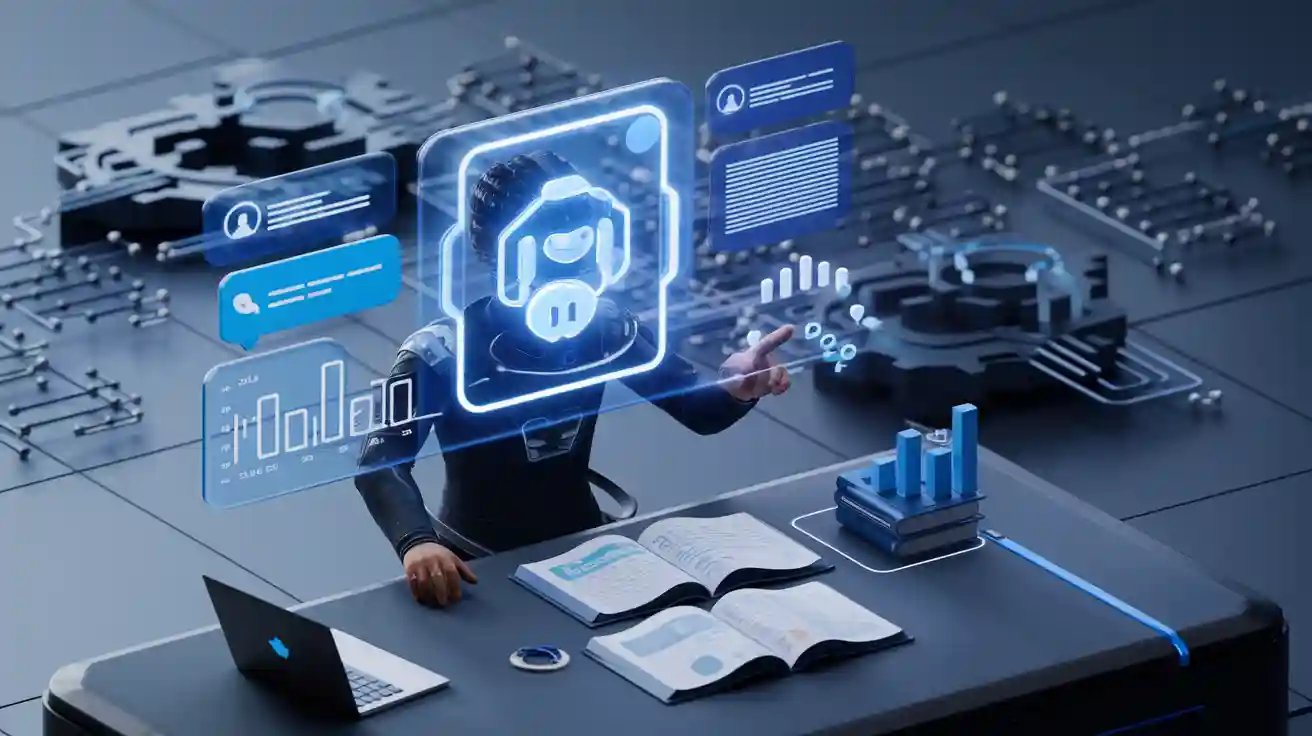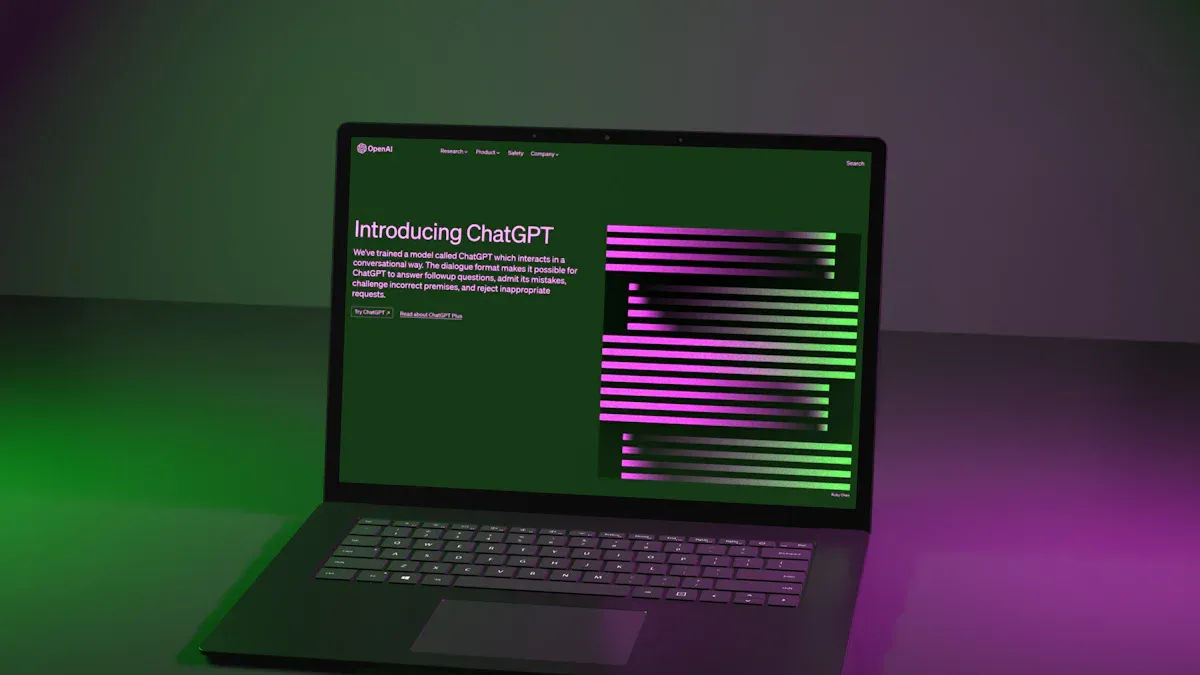How to Train an AI Chatbot with Custom Data in 2025

Training a chatbot using the ChatGPT train model with custom data has revolutionized business strategies in 2025. This method enables the creation of tailored solutions that cater to specific requirements. For instance, 70% of businesses now focus on integrating internal knowledge into AI systems, ensuring their chatbots provide accurate and relevant responses. This strategy not only boosts customer satisfaction but also streamlines operational processes.
Utilizing your own data to train a chatbot through the ChatGPT train model offers several immediate advantages:
Personalization ensures the chatbot comprehends your unique domain.
Faster resolutions minimize delays in customer interactions.
Improved contextual understanding equips the chatbot to manage complex queries effectively.
By adopting the ChatGPT train model, you can develop a chatbot that aligns seamlessly with your brand and delivers a significant competitive advantage.
Key Takeaways
Teaching a chatbot with your data helps it give better answers.
Gather different and good-quality data so it can answer many questions.
Test and fix your chatbot often to make it work better.
Connect your chatbot to current systems to make work easier and faster.
Learn new AI methods to keep improving your chatbot and user experience.
Understanding Custom AI Chatbots
What Is a Custom-Trained ChatGPT AI Chatbot?
A custom-trained ChatGPT AI chatbot is designed to meet your specific business needs by leveraging proprietary data. Unlike generic chatbots, which rely on pre-defined responses, custom chatbots adapt to your unique domain. By training ChatGPT with your data, you create a virtual assistant capable of delivering tailored and relevant information. This personalization enhances user engagement and ensures the chatbot aligns with your brand's voice.
Generic chatbots often fail to address complex queries or provide contextually accurate answers. Custom ChatGPT chatbots overcome these limitations by learning from your business data. They offer dynamic responses that cater to your audience's expectations, making them more effective in solving unique challenges.
Key Benefits of Training ChatGPT on Your Own Data
Training ChatGPT on your own data unlocks measurable benefits across industries:
Improved Customer Support: Octopus Energy's chatbot handles 44% of inquiries, outperforming human agents in satisfaction.
Enhanced Personalization: Expedia's chatbot acts as a travel agent, helping users plan vacations.
Domain-Specific Expertise: Healthcare chatbots use medical terminology to assist patients effectively.
Boosted Sales: Ecommerce platforms use custom chatbots to recommend products and answer questions.
Tailored Learning Support: Udacity employs AI chatbots to provide personalized education.
These examples highlight how custom-trained chatbots transform user experiences. By integrating your data, you ensure the chatbot delivers accurate and context-aware responses, fostering trust and satisfaction.
Example: Training Newoaks AI Agent with Custom Data
Newoaks faced several challenges while training its AI agent with custom data. Managing API keys securely and handling rate limits required technical expertise. Ensuring data privacy and compliance with laws protected sensitive information. The team also worked to define user expectations, ensuring the chatbot's capabilities aligned with customer needs.
Bias in training data posed another hurdle. Newoaks prioritized diversity and quality to ensure fair and accurate responses. These efforts resulted in a chatbot that met user demands while maintaining ethical standards. By addressing these challenges, Newoaks successfully created a robust AI agent tailored to its business goals.
Preparing Your Data for ChatGPT Training
Collecting Relevant Data
To train your chatbot effectively, you need to start by gathering high-quality data. This step ensures the chatbot learns from accurate and diverse information. Begin by selecting reliable sources such as internal company records, public datasets, or even web scraping. Crowdsourcing can also help you collect unique insights.
Diversity in your dataset is crucial. It allows the chatbot to handle a wide range of user inquiries. For example, include data that reflects different customer needs, languages, and scenarios. Regularly updating your dataset ensures the chatbot stays relevant as language and user expectations evolve.
Tip: Validate your data rigorously to maintain quality. Remove outdated or irrelevant information before moving to the next step.
Cleaning and Pre-Processing Data
Raw data often contains errors or inconsistencies that can confuse the chatbot during training. Cleaning and pre-processing your data is essential to improve its quality. Use tools like Python libraries (Pandas or NumPy) to filter out unnecessary elements. For text data, remove duplicates, punctuation, and special characters.
Normalization is another key step. Standardize your data by converting text to lowercase and ensuring consistent formatting. Tokenization, which breaks text into smaller units, makes it easier for the ChatGPT model to process the information. These steps streamline the training process and enhance the chatbot's performance.
Note: Address missing or erroneous values during cleaning to avoid inaccuracies in the chatbot's responses.
Structuring Data for ChatGPT Train Model
Properly structured data is the foundation of a successful chatbot. Organize your dataset into clear question-answer pairs. This format helps the ChatGPT model understand and learn effectively. Segment your data into training, validation, and testing sets. This approach ensures the chatbot performs well across different scenarios.
Define dialogue norms to guide the chatbot's behavior. For instance, specify how it should respond to common queries or handle sensitive topics. Regularly review and proofread your data to eliminate errors and maintain clarity. Including diverse perspectives in your training data reduces bias and improves the chatbot's inclusivity.
Tip: Use tools to identify and address potential biases in your dataset before finalizing it for training.
Step-by-Step Guide to Train ChatGPT on Your Own Data
Setting Up the Training Environment
Before starting the custom chatbot training process, you need to prepare a robust training environment. This ensures the ChatGPT train model runs smoothly and efficiently. Use the following hardware and software recommendations:
Component | Recommendation |
|---|---|
CPU | Intel Core i7/i9 or AMD Ryzen |
GPU | NVIDIA GeForce RTX 2080 or higher |
Memory | |
Storage | At least 500GB of SSD storage |
Install the necessary software, such as Python and machine learning libraries like TensorFlow or PyTorch. These tools help you manage the methods to train ChatGPT effectively. Ensure your system meets these requirements to avoid interruptions during the training process.
Uploading and Configuring Custom Data
Once your environment is ready, the next step is to upload and configure your data. Follow these steps to train ChatGPT on your knowledge base:
Remove duplicates and irrelevant information from your dataset.
Proofread the content to ensure proper word usage and sentence construction.
Define dialogue norms to guide the chatbot’s responses and prevent misunderstandings.
Here’s a stepwise guide to upload and configure your data:
Upload high-quality documents. Select only the most relevant files instead of overwhelming the system with unnecessary data.
Curate content from trusted sources, such as internal reports or company websites.
Test the model by asking specific questions to evaluate its understanding of your data.
Refine and adjust the dataset if the responses are inaccurate.
These steps ensure the ChatGPT train model learns effectively from your custom data.
Running the ChatGPT Train Model Process
After uploading your data, initiate the training process. Use the ChatGPT train model to process your structured dataset. Monitor the training progress to identify potential issues, such as factual inaccuracies or inappropriate responses. Address these errors by refining your data and retraining the model.
Testing the chatbot during this phase is crucial. Ask it diverse questions to evaluate its contextual understanding and accuracy. Iteratively improve the training process until the chatbot meets your expectations. This ensures your custom-trained ChatGPT AI chatbot delivers reliable and context-aware responses.
Testing and Refining Your Custom Chatbot
Evaluating Chatbot Performance
Testing your chatbot is essential to ensure it meets user expectations. Start by analyzing user engagement metrics. For example, calculate the percentage of users who interact with the chatbot by dividing the number of active conversations by the total chatbot sessions. This metric reveals how effectively your chatbot engages users.
You should also monitor specific performance indicators based on your chatbot's purpose. For customer care, track metrics like the reduction in first-level call rates or the escalation rate. For marketing, focus on conversion rates and basket abandonment rates. The table below highlights key metrics across different categories:
Category | Metrics |
|---|---|
Customer care | Decrease of first-level call rate, Duration of calls generated by the chatbot, Email reduction rate, Escalation rate |
Marketing | Conversion rate, Average duration of sessions, Number of pages viewed, Basket abandonment rate |
HR | Monthly question volume, Escalation rate, Frequent themes |
User experience | Self-service Rate, Performance Rate |
Additionally, evaluate user sentiment by analyzing dialog interactions. Look for implicit feedback, such as how often users copy responses or click on provided links. These insights help you understand satisfaction levels and identify areas for improvement.
Tip: Regularly test your chatbot with diverse scenarios to ensure it performs well under different conditions.
Iterative Refinement of Training Data
Refining your chatbot's training data is a continuous process. Begin by testing the chatbot across various scenarios to identify weaknesses. For example, if the chatbot struggles with specific queries, adjust the training data to address these gaps. Fine-tuning the chatbot based on these insights improves its accuracy and reliability.
Incorporate user feedback to enhance performance further. Pay attention to recurring issues or common complaints. Use this information to update the training data and retrain the chatbot. Transfer learning can also optimize performance by building on existing knowledge.
A/B testing is another effective method. Compare different versions of responses to determine which performs better. This approach helps you refine the chatbot's communication style and ensure it aligns with user expectations.
Note: High-quality and diverse training data are crucial for maintaining relevance. Regular updates and feedback loops keep your chatbot aligned with evolving user needs.
By following these steps, you can fine-tune your chatbot to deliver exceptional results. Partnering with chatbot development services can also provide expert guidance throughout this process.
Deployment and Integration of Your Chatbot

Deploying the Custom-Trained ChatGPT AI Chatbot
Deploying your custom-trained ChatGPT AI chatbot involves several key steps to ensure it functions effectively and securely. Follow this step-by-step tutorial to streamline the process:
Access the OpenAI API: Begin by signing up on OpenAI’s platform and generating an API key. This key allows you to connect your chatbot to the ChatGPT model.
Upload and Process Your Data: Use a Python script to upload your cleaned and structured data to the API. This step ensures the chatbot learns from your custom dataset.
Create the Chatbot Interface: Build an interactive interface using tools like Gradio. This interface will allow users to interact with your chatbot seamlessly.
Deploy the AI Chatbot to Your Website: Embed the chatbot into your website using HTML, CSS, and JavaScript. This integration ensures users can access it directly.
Test Your ChatGPT Model: Interact with the chatbot to evaluate its responses. Monitor its performance to identify and fix any issues.
Ensure Security and Compliance: Encrypt sensitive data and follow data protection regulations to safeguard user information.
By following these steps, you can deploy your chatbot efficiently while maintaining security and compliance standards.
Tip: Regularly test your chatbot after deployment to ensure it continues to meet user expectations and adapts to new data.
Integrating the Chatbot into Applications
To integrate your chatbot into existing applications or workflows, you need to follow best practices that enhance efficiency and user experience. Here are some key strategies:
Set clear goals for your chatbot. Define measurable objectives, such as reducing response times or improving customer support accuracy.
Map data fields correctly to avoid errors and ensure smooth workflows. Align customer data fields with your chatbot’s database for seamless integration.
Build smart automation rules. Automate tasks like lead scoring, meeting scheduling, and support ticket handling to save time and resources.
Train users and update systems. Provide hands-on training to your team and establish feedback loops for continuous improvement.
Ensure data security. Use encryption, access controls, and compliance protocols to protect sensitive information.
When you integrate your chatbot effectively, it becomes a powerful tool for improving customer support and streamlining operations.
Note: Always monitor the chatbot’s performance after integration to identify areas for improvement and ensure it aligns with your business goals.
Future Trends in ChatGPT Training
Innovations in ChatGPT Train Model Techniques
In 2025, advancements in ChatGPT training techniques have made the process more efficient and versatile. OpenAI now allows you to upload files directly from platforms like Google Drive and Microsoft OneDrive. This feature simplifies data integration, enabling you to train your chatbot with ease. Additionally, ChatGPT can now interact with tables and charts, making it a powerful tool for analyzing complex datasets. These improvements enhance the chatbot’s ability to provide accurate and context-aware responses.
Another groundbreaking innovation involves the use of spiking neurons in AI training. Researchers at the University of Bonn have developed this energy-efficient technique, which mimics the way biological neurons communicate. By adopting this method, you can reduce the energy consumption of your chatbot’s training process. This approach not only addresses environmental concerns but also lowers operational costs, making AI development more sustainable.
Emerging Tools for Training Chatbots with Custom Data
New tools have emerged to help you train chatbots more effectively. OpenAI’s API remains a leading choice, offering flexibility to customize your chatbot’s behavior. You can adjust parameters like the prompt, engine, and temperature to fine-tune the model’s responses. This level of control ensures your chatbot aligns with your specific needs.
For a more user-friendly experience, platforms like Newoaks AI provide pre-built templates and intuitive interfaces. These tools eliminate the need for extensive coding knowledge, allowing you to focus on curating high-quality data. By leveraging these resources, you can create a chatbot that reflects your brand’s tone and delivers a personalized user experience.
Tip: Choose tools that match your technical expertise and business goals to maximize the effectiveness of your chatbot training process.
Training a chatbot with your own data involves a structured process that ensures relevance and accuracy. Start by preparing a diverse dataset to cover various user queries. This approach helps the chatbot recognize and respond effectively to both simple and complex requests. Follow essential steps like data preparation, tool selection, training, and testing to achieve optimal results. Staying informed about advancements in ChatGPT training techniques allows you to adopt the latest methods, improving performance and user satisfaction. Regular updates and monitoring ensure your chatbot evolves with changing customer needs, making it a reliable and ever-improving solution.
Tip: Use a sizable and well-suited dataset to enhance the chatbot’s ability to assist users effectively.
FAQ
What is the advantage of using a custom AI chatbot over a generic one?
A custom AI chatbot adapts to your specific needs. It uses your data to provide accurate, domain-specific responses. This improves the customer experience by addressing unique queries effectively, unlike generic chatbots that rely on pre-set answers.
How can you create a personalized ChatGPT chatbot?
To create a personalized ChatGPT chatbot, prepare a dataset reflecting your business needs. Train the model using structured data. Test and refine it to ensure accuracy. Finally, deploy it to your platform for seamless integration into your customer experience strategy.
How does a chatbot improve customer experience?
A chatbot enhances customer experience by offering instant, accurate responses. It reduces wait times and handles complex queries efficiently. By using a custom AI chatbot, you ensure the interaction aligns with your brand’s tone and meets user expectations.
What data is needed to create a chatbot?
You need diverse, high-quality data, such as FAQs, customer interactions, and internal documents. This ensures the chatbot learns to handle various scenarios and provides accurate responses, improving the overall customer experience.
Can a custom AI chatbot handle sensitive information?
Yes, a custom AI chatbot can handle sensitive information if you implement strict security measures. Encrypt data, follow compliance regulations, and limit access to ensure user privacy and trust.
See Also
Engage Your Data: A Complete Guide to Custom ChatGPT Training
The Definitive Handbook for Chatbot API Integration This Year
Tailoring Chatbots Using SleekFlow and AI: A Hands-On Guide
A Detailed Guide to Building a Business-Focused ChatGPT Chatbot
The Complete Handbook for Developing Custom AI Chatbots via Zapier

